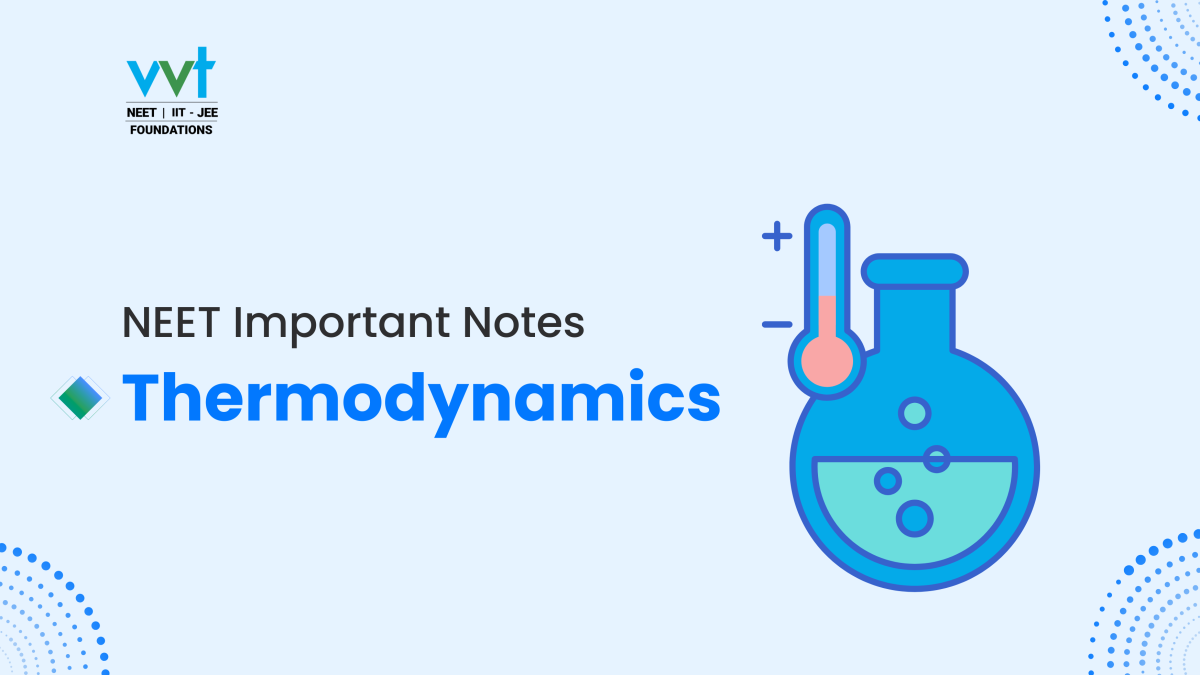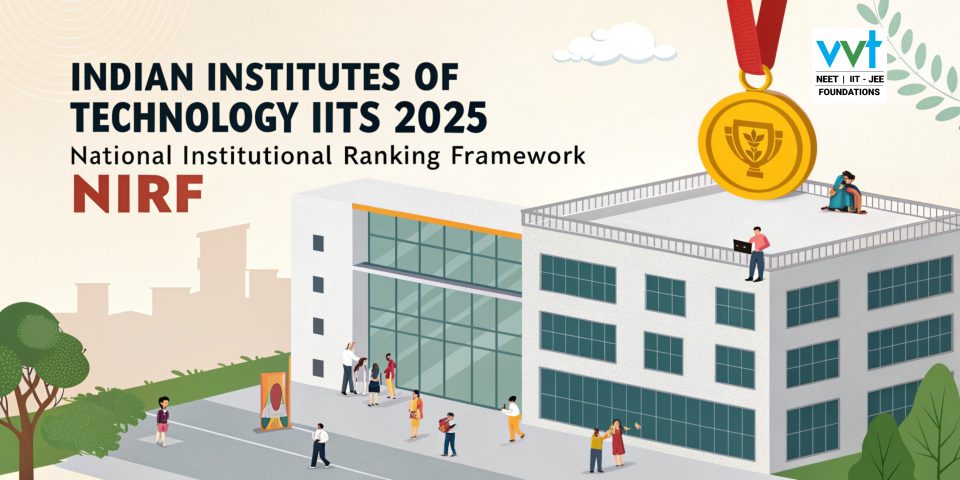
Motion in a Straight Line: A Comprehensive Guide for NEET 2025 | VVT Coaching
April 23, 2025
NEET City Intimation Slip 2025 Released: Download Link, Dates, and More – VVT Coaching Guide
April 26, 2025Thermodynamics: A Comprehensive Guide for NEET 2025 | VVT Coaching
VVT Coaching Chennai – Ranked #1 Best NEET Coaching Centre by Times Now!
Ever wondered how a refrigerator keeps your food cool or how engines power cars? The answer lies in thermodynamics, a fascinating branch of physics that explores heat, work, and energy. For NEET 2025 aspirants, mastering this topic is not just about scoring well—it’s about understanding the world around you.
At VVT Coaching, we’re here to make thermodynamics simple and engaging, so you can ace your exams with confidence. This guide breaks down the essentials—systems, laws, processes, and key concepts like enthalpy and entropy—into easy-to-understand sections. Let’s dive in and make physics fun!
What is a System in Thermodynamics?
A system is the part of the universe we’re focusing on, like a gas in a balloon or a chemical reaction in a test tube. Everything else is the surroundings. The boundary between them controls how matter and energy move back and forth. Systems come in three types:
- Open System: Allows both matter and energy to flow in and out, like a boiling pot of water.
- Closed System: Only energy can pass through, like a sealed jar of gas.
- Isolated System: Nothing gets in or out, like a perfectly insulated thermos.
Understanding these helps us predict how systems behave under different conditions, a key skill for NEET.
The Four Laws of Thermodynamics
These laws are the rules that govern how energy works:
- Zeroth Law: If two systems are each in balance with a third, they’re in balance with each other. This is why we can measure temperature.
- First Law: Energy can’t be created or destroyed, only changed—like how a battery stores energy for your phone.
- Second Law: Things tend to get messier over time (entropy increases)—like how your room gets cluttered if you don’t tidy it.
- Third Law: At absolute zero, everything is perfectly ordered, though we can’t actually reach it.
These laws are the foundation of thermodynamics, and they’re often tested in NEET exams.
Types of Thermodynamic Processes
Processes describe how systems change:
- Isothermal: Temperature stays the same, like a slow-cooked meal where heat is carefully controlled.
- Adiabatic: No heat is exchanged, like a quick puff of air from a spray can.
- Isobaric: Pressure is constant, like boiling water at sea level.
- Isochoric: Volume doesn’t change, like heating a gas in a rigid bottle.
- Cyclic: The system loops back to the start, like a refrigerator cycle.
Each process has unique characteristics, and knowing them helps you solve NEET problems efficiently.
Summary of Thermodynamic Processes
| Process | What Stays Constant? | Example |
| Isothermal | Temperature | Slow heat exchange |
| Adiabatic | Heat (none) | Rapid gas compression |
| Isobaric | Pressure | Heating at fixed pressure |
| Isochoric | Volume | Heating in a rigid container |
| Cyclic | None | Refrigerator cycle |
Key Concepts: Enthalpy, Entropy, and Gibbs Free Energy
- Enthalpy: Think of it as the total heat content—useful for understanding reactions at constant pressure, like in a lab.
- Entropy: A measure of disorder—like how scattered your notes are before an exam. The universe tends toward more entropy.
- Gibbs Free Energy: Helps predict if a reaction will happen on its own—like checking if you have enough energy to study after a long day.
These concepts are crucial for NEET, as they appear in both physics and chemistry questions.
Download the pdf of ‘Thermodynamics notes for neet’
Weightage of Thermodynamics NEET
| NEET Chapter Wise Weightage 2025 for Physics | |
| Topics | Weightage (%) |
| Thermodynamics | 3% |
Conclusion
Thermodynamics is a vital topic for NEET 2025, offering insights into energy transformations that are essential for both exam success and real-world applications. By grasping the concepts, laws, and processes outlined here, you’ll be well-prepared to tackle NEET questions with confidence. VVT Coaching is here to support your journey with expertly crafted resources, including this guide and our downloadable PDF notes. Keep practicing, and let us help you achieve your dream of excelling in NEET 2025.
Also read:
- NEET Chapter Wise Weightage 2025
- NEET Physics Chapter-Wise Weightage
- NEET Chemistry Chapter-wise and Concept-Wise Weightage
FAQs on Thermodynamics
- What’s the difference between heat and temperature?
Heat is the energy transferred between systems, while temperature measures how hot something is. - Why can’t we reach absolute zero?
It’s theoretically impossible because it would require removing all energy, which isn’t achievable. - How does a refrigerator work?
It uses a cycle to transfer heat from inside to outside, keeping your food cool. - What is an adiabatic process?
A process where no heat is exchanged, like the rapid compression of gas in a cylinder. - Why is entropy important?
It explains why some processes happen naturally, like ice melting in a warm room. - How can I prepare thermodynamics for NEET 2025?
Focus on key concepts, practice numericals, and use VVT Coaching’s PDF notes for thorough revision.











